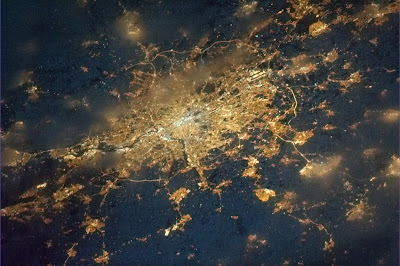There is something of an evangelical fervour about the way public lighting authorities are installing new LED lighting on our streets and roads across the UK.
But in the rush to cut power consumption and save money long-term, our public authorities and the lighting industry itself may be turning a blind eye to serious health risks posed by this new technology.
Increased risks of cancer, diabetes and cardiovascular disease is hardly being championed by the lighting companies that market and promote the benefits of light emitting diodes (LEDs).
A report released this summer by the American Medical Association (AMA) Council on Science and Public Health confirms suspected impacts to human health and the environment caused by excessive amounts of blue light.
‘Human and Environmental Effects of Light Emitting Diode Community Lighting’ presents significant implications for the ongoing, worldwide transition to LEDs as the outdoor lighting technology of choice.
While it supports the use of LED lighting in order to reduce energy consumption and the use of fossil fuels, it also recognises that some LED lights are harmful.
The report details findings from an increasing body of scientific evidence that implicates exposure to blue-rich white light at night to increased risks for cancer, diabetes and cardiovascular disease.
Blue-rich white LED street lighting can be five times more disruptive to our sleep cycle than conventional street lighting, according to the report.
Recent large surveys have documented that brighter residential night-time lighting is associated with reduced sleep, impaired daytime functioning and a greater incidence of obesity.
As a result of a potential risk to public health from excess blue light exposure, the AMA report encourages attention to optimal design and engineering features when converting from existing lighting technologies to LED.
These include requiring properly shielded outdoor lighting, considering adaptive controls that can dim or extinguish light at night, and limiting the correlated colour temperature (CCT) of outdoor lighting to 3000 Kelvin (K) or lower.
Colour temperature is a measure of the spectral content of light, and higher CCT values indicate a greater amount of blue light.
"This is a timely and important policy statement by the AMA," says Richard Stevens, a cancer epidemiologist at the University of Connecticut School of Medicine and co-author of the report.
"As with most new technology, everyone is enamoured at first because it's so great and does so much for us, but the downsides eventually become apparent. Electric light has great attributes, but we now realise, when poorly used and abused, there are also many problems."
The AMA findings also underscores the fact that detrimental effects of blue-rich LED lighting are not limited to humans.
“Other species are just as vulnerable to disruption of their circadian rhythms as are humans, and often more so,” explains Travis Longcore, Assistant Professor of Architecture, Spatial Sciences, and Biological Sciences at the University of Southern California.
“Those impacts and others can be reduced by limiting blue-light emissions. Policy makers, government officials, and the American public now have the science and the imprimatur of the AMA to insist that LED installations be designed to reduce impacts on wildlife and human health.”
The issue is an important one and we should have the confidence that it is being properly addressed by those in the UK responsible for our night-time lighting - including local authorities, public bodies and the lighting industry itself.































